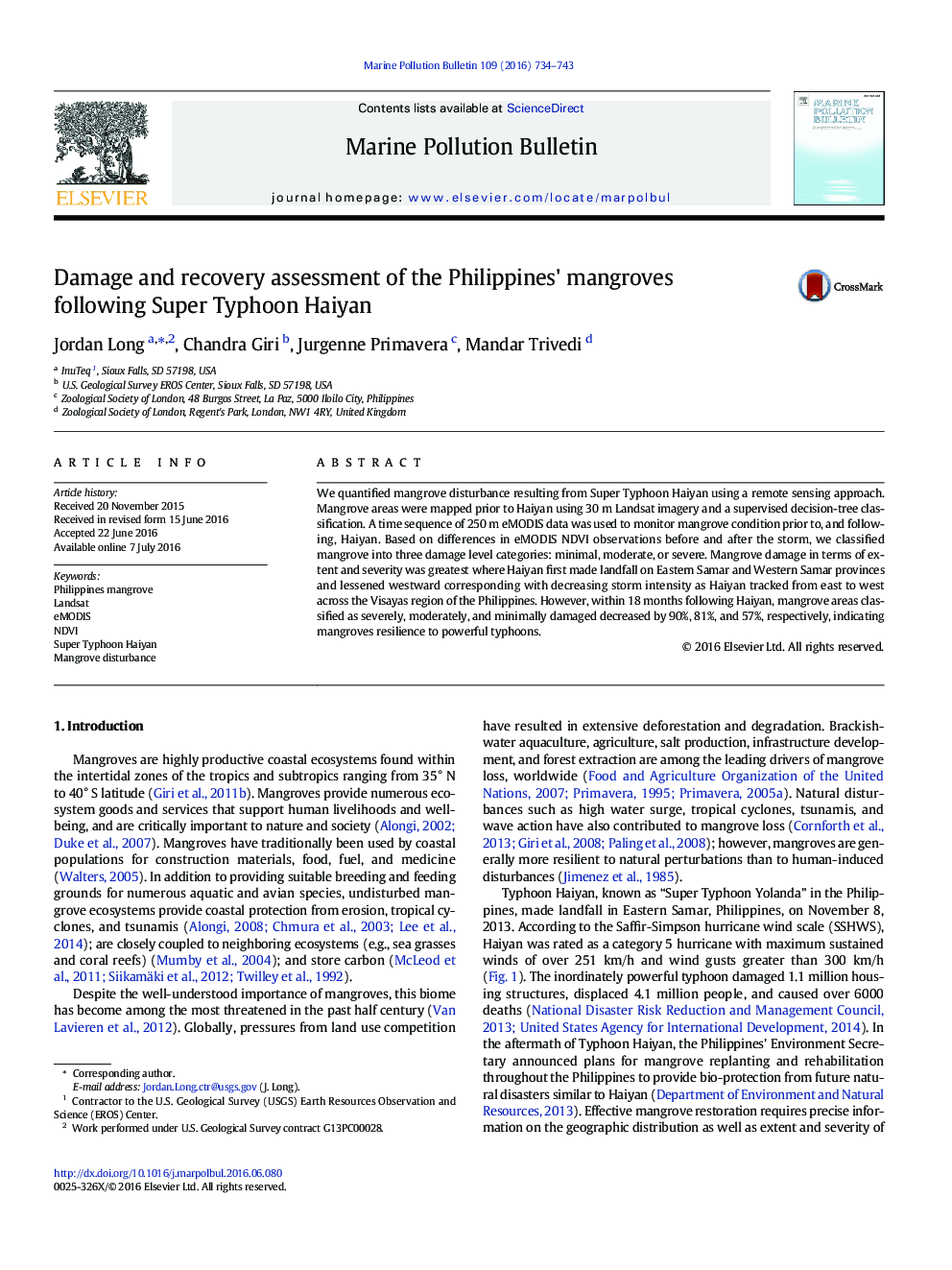| Article ID | Journal | Published Year | Pages | File Type |
|---|---|---|---|---|
| 6355615 | Marine Pollution Bulletin | 2016 | 10 Pages |
â¢We used remote sensing and ground observations to map change in mangrove condition resulting from Typhoon Haiyanâ¢Mangrove damage was greatest where Haiyan first made landfall on Eastern Samar and Western Samar provincesâ¢The majority of damaged mangrove recovered within 18 months following Super Typhoon Haiyan
We quantified mangrove disturbance resulting from Super Typhoon Haiyan using a remote sensing approach. Mangrove areas were mapped prior to Haiyan using 30Â m Landsat imagery and a supervised decision-tree classification. A time sequence of 250Â m eMODIS data was used to monitor mangrove condition prior to, and following, Haiyan. Based on differences in eMODIS NDVI observations before and after the storm, we classified mangrove into three damage level categories: minimal, moderate, or severe. Mangrove damage in terms of extent and severity was greatest where Haiyan first made landfall on Eastern Samar and Western Samar provinces and lessened westward corresponding with decreasing storm intensity as Haiyan tracked from east to west across the Visayas region of the Philippines. However, within 18Â months following Haiyan, mangrove areas classified as severely, moderately, and minimally damaged decreased by 90%, 81%, and 57%, respectively, indicating mangroves resilience to powerful typhoons.
